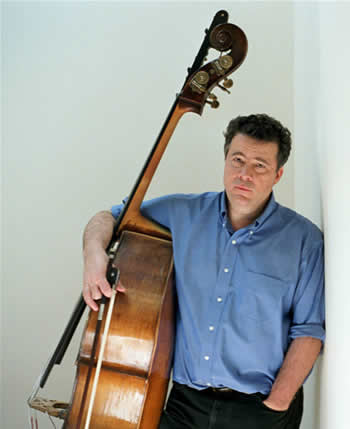Tuesday evening, March 13, 2012, will surely remain a memorable date for those lucky enough to attend Carolina Performing Arts‘ presentation of the Amsterdam Baroque Orchestra & Choir in a magnificent performance of J. S. Bach’s Mass in B minor, S.232, given under the direction of the legendary Ton Koopman in Carolina’s resonant Memorial Hall. One of the most celebrated works in all of Western music, Bach’s powerful Mass is universally revered yet still remains so enigmatic it never fails to draws audiences like moths to a flame. This is particularly so when the performing artists are those we were privileged to hear. The place was packed and the excitement, palpable.
The evening began with a welcome from James Moeser, who provided valuable historic insights. The B minor Mass was not even mentioned in Bach’s lengthy obituary, and it would not be published until 1833, when it was championed by great Romantics like Mendelssohn. It would be another century or so before Bach’s great Mass could be experienced in anything like its original setting, and this is what Tuesday night’s audience had come to hear: a choir of 25, four soloists, an orchestra of 27 playing what appeared to be period instruments, and with two charming continuo organs, often used simultaneously — one played by Koopman himself during arias and duetti (conducting from the keyboard is one of his trademarks); the other played by Kathryn Cok nearly throughout, but particularly whenever Koopman directed the chorus.
The nimble Koopman, who bounded onto the stage with the energy of a 25-year-old rock star, has made a career out of his love for all things Bach. The organist, harpsichord player, and conductor founded the Amsterdam Baroque Orchestra in 1979 and the Amsterdam Baroque Choir in 1992. Known worldwide for his rock-solid knowledge of historic performance practices and for his award-winning recordings of the Bach cantatas, Koopman maintains a formidable schedule of recording, research, conducting, and teaching. His amazing energy and obvious love for this music colored the entire evening. Those lucky enough to sit where we could catch glimpses of his face in profile during the performance saw what can only be described as an endless reservoir of joy and boundless exuberance. At the end of such a lengthy work, when any conductor could be forgiven for showing signs of exhaustion, Koopman continued to nod and beam broadly (his trademark) and looked as if he could do the whole thing over again — gladly!
Koopman’s infectious energy translated into an emotionally rich, rhythmically alive, incredibly nuanced performance of Bach’s masterpiece. The orchestra, ably led by concertmaster Catherine Manson, was fully engaged throughout, clearly looking privileged to do Koopman’s bidding. What a joy it was to watch such effortless playing! Obbligato instruments — the flutes, oboes, and bassoons — and the fine trumpets and horn, gave the audience a special treat by standing up in selected movements. The musical body language was fun to watch, the incredible physicality of the phrasing simply outstanding. Soloists Teresa Wakim, soprano, Bogna Bartosz, alto, Tilman Lichdi, tenor, and Klaus Mertens, bass, were uniformly excellent, poised and perfect throughout, as able to be light (“Christe,” duetto) as dark (“Agnus Dei”). The flexibility of these singers allowed a suitably wide range of expression and effortless lines, no matter how quick the tempi. As with the orchestra and chorus, vibrato was not on display here, only a natural richness in voices capable of capturing the tiniest detail and always perfectly in tune. The chorus, with the lion’s share of the work, never flagged. These singers are obviously the cream of the crop: impeccable musicians highly trained in the art of expressive ensemble singing. From the poignant darkness of the famous “Crucifixus” to the boisterous “Et resurrexit,” the chorus knew exactly how to interpret each segment for maximum effectiveness.
The “Missa” (Kyrie-Gloria) was composed in 1733; the “Sanctus”dates from 1724, and Bach worked on the “Symbolum Nicenum” (Credo) near the end of his life. Mostly adapting and rearranging music from his earlier works, especially his own cantatas, Bach assembled his Mass during the final two years of his life. He never heard it performed and, indeed, he may never have expected this work to be performed all together, as we are used to hearing it. Like his Art of Fugue and Musical Offering, Bach’s Mass may have been primarily intended as an intellectual/musical summing up of his life’s work, honoring the past by taking on the great architecture of the Mass as its structure. Whatever Bach’s intention, we can be forever grateful that the work exists and that it continues to be championed by the likes of Ton Koopman and his Amsterdam Baroque Orchestra & Choir.












